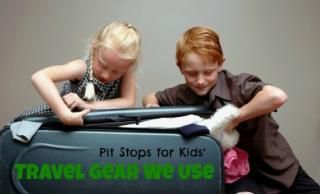In our part of the world, Earth Day usually dawns chilly and soggy. For many years, I dutifully took my kids out to the local celebration (always held outdoors, of course) so we could freeze for a few hours while batting around an oversized globe-patterned beach ball, learn about sustainable housing and bio-diesel, and eat local produce. Don’t get me wrong: there’s nothing wrong with any of that. But in the past few years, we’ve found a better way to celebrate. We now strive to honor Earth Day every day.
How? By teaching our kids to appreciate nature and the outdoor world that surrounds us. When kids have seen, felt, and interacted with nature firsthand, they’re much more likely to relate to it and strive to protect it as they get older. It’s true that as an outdoor columnist for OutdoorsNW, I have ample opportunity to expose my kids to the wilderness in our region, but the great thing about the outdoors is how accessible it is. Outdoor adventures are usually low-cost (or free), within easy driving distance, and great exercise. The following are our favorite ways to get outside with kids:
1. Go camping.
Camping is cheap, it’s available no matter where you live, and while it takes some effort, it’s a major kid-pleaser. Check out our favorite campgrounds along the Pacific coast, or check your own state park listings for a one-tank-of-gas-or-less getaway. If you’re ambitious, plan a multi-night backpacking adventure.
2. Kayak or river raft.
Kayaking and rafting are great ways to introduce kids to water sports. Families can start on still lakes and rivers, and most locations include a guide who can help you get started. You can opt to be on the water for only a few hours if desired, and can return to comfortable lodging afterward. Kids dig kayaking and river rafting because it’s more exciting than hiking, with the same explorative benefits. Our top favorite kayaking and river rafting adventures have included a family float along the Deerfield River in Massachusetts with Zoar Outdoor, an autumn kayaking trip in Oregon’s Cascade Lakes with Wanderlust Tours, and kayaking Vancouver Island Canada’s Ucluelet harbor with Majestic Ocean Kayaking.
3. Hike!
It doesn’t get more basic than this. Take the kids, give them a backpack and walking stick (both optional), and drive to the nearest trail head. Don’t know where to find one? Start at your local outdoor store and pick up a local hiking guide or simply ask the salesperson. Bring sunscreen, water bottles, and a picnic, and you’re all set. To keep kids motivated and entertained en route, allow them to set the pace and stop to explore, even if it means climbing every third tree or stopping to build (and dismantle) a dam along a creek. If you want to make a vacation of it, start with our top five Western mountain lodges, and spend your days on the trail and your nights in comfort.
4. Horseback ride.
Many rustic or outdoor resorts now offer horseback riding. For roughly the cost of any outdoor excursion (or round of golf or spa treatment) you can introduce your kids to the cowboy (or girl) lifestyle…for a few hours. We love horseback riding while on vacation because it accomplishes two important goals: fun for the kids and the chance to see more of the outdoors up-close. Even kids as young as five can often ride solo. Our favorite horseback riding operations have included those at Brasada Ranch and Colter Bay in Grand Tetons National Park.
5. Mountain bike.
Mountain biking is an expensive way to enjoy the outdoors if you own your own bikes and equipment, but surprisingly affordable to rent for the day at most local bike shops (whether you’re on vacation or at home). Because you can’t always mountain bike on pedestrian trails (but sometimes can), it’s important to pick up a cycling trail map where you rent your bikes. If you want to go extreme, try gravity-based mountain biking at a ski resort in summer. It’s one of the activities my kids (and I) have enjoyed most in the past few years! Learn more by checking out our biking experience at Northstar California.
































